Can A Tumor In The Leg Be Repaired
A tumor is a lump or mass of tissue that forms when cells carve up uncontrollably. For most bone tumors, the cause is unknown. A growing tumor may replace healthy tissue with abnormal tissue. It may weaken the os, causing it to suspension (fracture). Aggressive tumors tin lead to disability or death, particularly if signs and symptoms are ignored.
Nearly os tumors are not-cancerous (benign). Some are cancerous (malignant). Occasionally infection, stress fractures and other not-tumor conditions can closely resemble tumors. Benign tumors are usually not life threatening. Malignant tumors can spread cancer cells throughout the body (metastasize). This happens via the claret or lymphatic system. Cancer that begins in bone (master bone cancer) is different from cancer that begins somewhere else in the torso and spreads to os (secondary bone cancer). The four most common types of main bone cancer are:
- Multiple Myeloma, the most common primary bone cancer, is a malignant tumor of os marrow. Information technology affects approximately twenty people per million people each year. Almost cases are seen in patients aged fifty to 70 years onetime. Whatever bone can exist involved.
- Osteosarcoma is the second most mutual os cancer. It occurs in two or three new people per million people each year. Near cases occur in teenagers. Most tumors occur effectually the knee. Other common locations include the hip and shoulder.
- Ewing'due south sarcoma most commonly occurs between age 5 and 20. The virtually common locations are the upper and lower leg, pelvis, upper arm and ribs.
- Chondrosarcoma occurs near commonly in patients twoscore to 70 years of age. Most cases occur around the hip and pelvis or shoulder.
There are many types of benign os tumors. The more common types include non-ossifying fibroma, unicameral (uncomplicated) bone cyst, osteochondroma, giant prison cell tumor, enchondroma and fibrous dysplasia.
Diagnosis
If you remember you might have a os tumor, come across your doctor as before long as possible for diagnosis and treatment. The doctor will collect detailed information most your general health and the tumor'south blazon, size, location and possible extent of spread.
Symptoms
Most patients with a bone tumor will experience pain in the area of the tumor. The pain is generally described as tedious and achy. It may or may not get worse with activity. The pain oftentimes awakens the patient at night. Although tumors are not caused by trauma, occasionally injury can cause a tumor to start hurting. Injury tin cause a os weakened past tumor to break, which often leads to severe pain. Some tumors can also cause fevers and night sweats. Many patients volition not experience any symptoms, but will instead note a painless mass.Medical history and physical examination: Tell the physician your complete medical history. This includes any medications you take, details about any previous tumors or cancers that you or your family members may have had, and symptoms y'all are experiencing. Your doc will physically examine you. The focus is on the tumor mass, tenderness in os and any impact on joints and/or range of motion. In some cases, the doc may want to examine other parts of your body to rule out cancers that tin spread to bone.
Imaging and tests: Your doctor volition probably obtain X-rays. Different types of tumors exhibit different characteristics on X-ray. Some dissolve bone or make a hole in the bone. Some cause actress germination of os. Some tin result in a mixture of these findings.
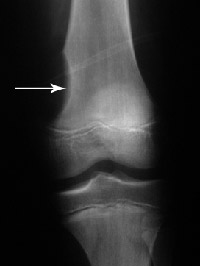

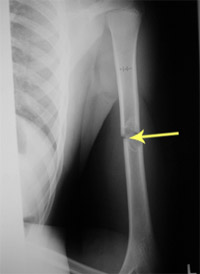
Some tumors accept characteristic findings on X-rays. In other cases, it may exist hard to tell what kind of tumor is involved. You lot may need more imaging studies to farther evaluate some tumors. These may include MRI (magnetic resonance imaging) or CT (computed tomography).
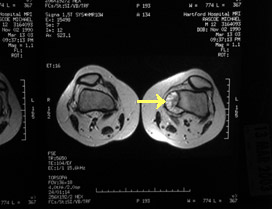
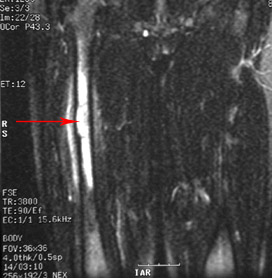
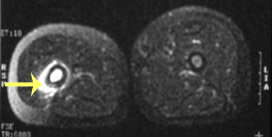
You may also require blood and or urine tests. If these tests are not adequate to diagnose your tumor, you may require a biopsy. A biopsy involves removing a sample of tissue from the tumor. The tissue sample is examined under a microscope. There are ii bones methods of doing a biopsy.
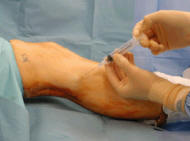
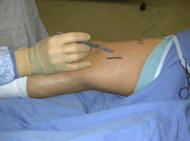
Handling
Benign tumors: In many cases, benign tumors just need to be watched. Some can be treated effectively with medication. Some beneficial tumors will disappear over fourth dimension; this is particularly true for some benign tumors that occur in children. Sure benign tumors can spread or go cancerous (metastasize). Sometimes your doctor may recommend removing the tumor (excision) or using other treatment techniques to reduce the risk of fracture and disability. Some tumors may come back–even repeatedly–later appropriate treatment.Malignant tumors: If you are diagnosed with a malignant bone tumor, you might want to go a second opinion to ostend it. If you lot have os cancer, your treatment team may include several specialists. These may include an orthopaedic oncologist, a medical oncologist, a radiation oncologist, a radiologist and a pathologist. Treatment goals include curing the cancer and preserving the function of your body. To treat malignant bone tumors, doctors often combine several methods. Treatment depends upon various factors including whether the cancer has spread.
- Localized stage cancer cells are contained to the tumor and surrounding area.
- Metastatic stage cancers accept spread elsewhere in the body. Tumors at this stage are more than serious and harder to cure.
Generally the tumor is removed using surgery. Often radiation therapy is used in combination with surgery.
- Limb relieve surgery removes the cancerous department of bone but keeps nearby muscles, tendons, nerves and claret vessels. If possible, the surgeon will take out the tumor and a margin of healthy tissue around it. The excised bone is replaced with a metallic implant (prosthesis) or os transplant.
- Amputation removes all or part of an arm or leg when the tumor is big and/or nerves and claret vessels are involved.
- Radiation therapy uses high-dose X-rays. This kills cancer cells and shrinks tumors.
- Systemic handling (chemotherapy) is often used to impale tumor cells when they take spread into the blood stream but cannot nevertheless exist detected on tests and scans. Chemotherapy is by and large used when cancerous tumors take a very high chance of spreading.
Later on Treatment
When treatment for a bone tumor is finished, you may need more than X-rays and other imaging studies. These tin can ostend that the tumor is actually gone. Yous may need to have regular doctor visits and tests every few months. When the tumor disappears, it is of import to monitor your body for its possible render (relapse).
Research on the Horizon/What's New?
Genetic enquiry is leading to a meliorate agreement of the types of bone tumors and their behaviors. Researchers are studying the pattern of metallic implants. This is allowing better office and durability after limb salve surgery. Advancements in the development of prosthetic limbs include computer technology. This is leading to better function and quality of life afterwards amputation. Research into new medications and new combinations of older medications will lead to continual improvements in survival from bone cancers. Your medico may discuss clinical inquiry trials with y'all. Clinical trials may involve the use of new therapies and may offer a better outcome.
Reproduced with permission Fischer S., (interim ed): Your Orthopaedic Connection. Rosemont, Illinois. Copyright American Academy of Orthopaedic Surgeons.
Source: https://health.uconn.edu/msi/clinical-services/orthopaedic-surgery/bone-tumors-and-oncology/benign-and-malignant-bone-tumors/
Posted by: hancockmilty1939.blogspot.com


0 Response to "Can A Tumor In The Leg Be Repaired"
Post a Comment